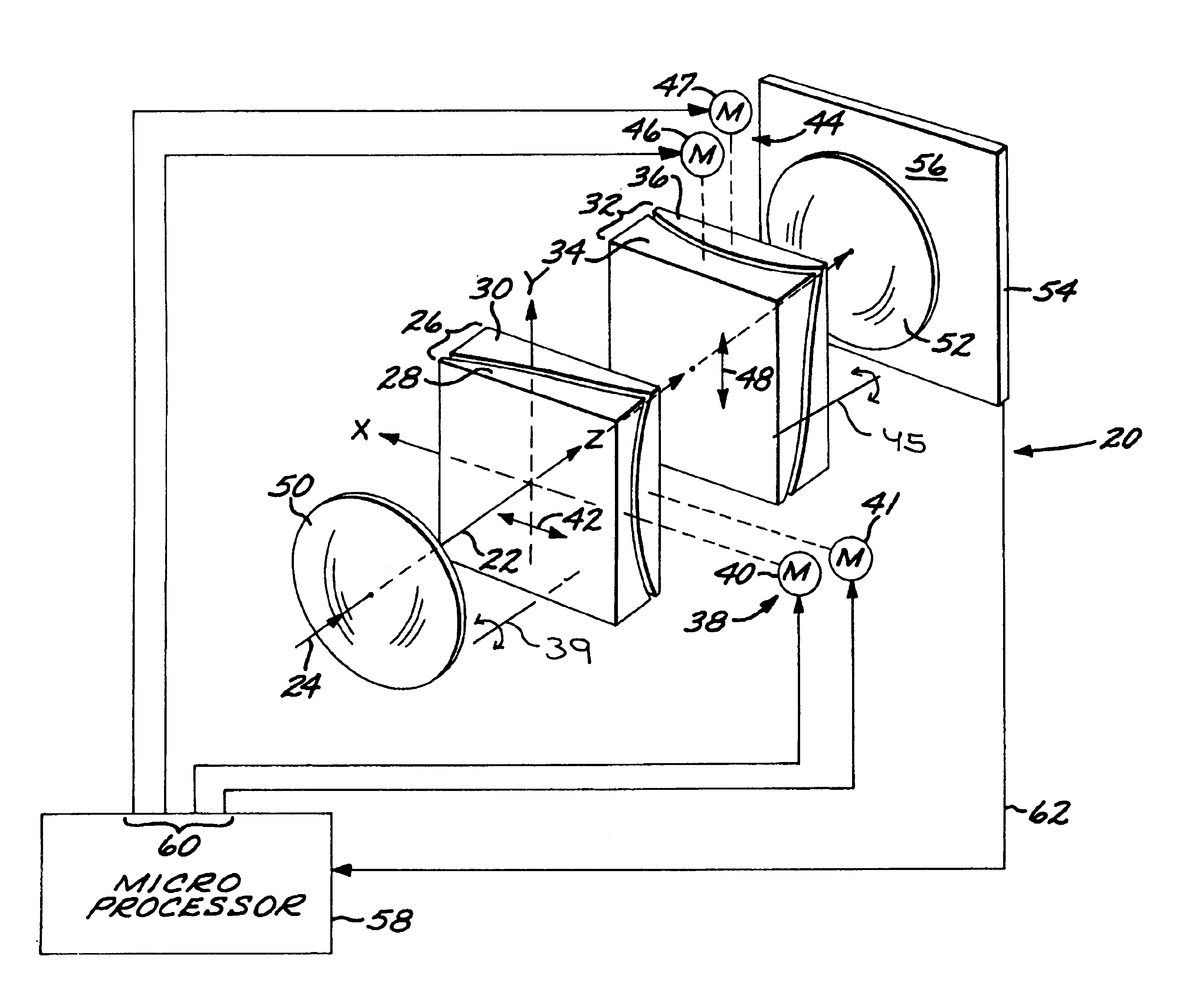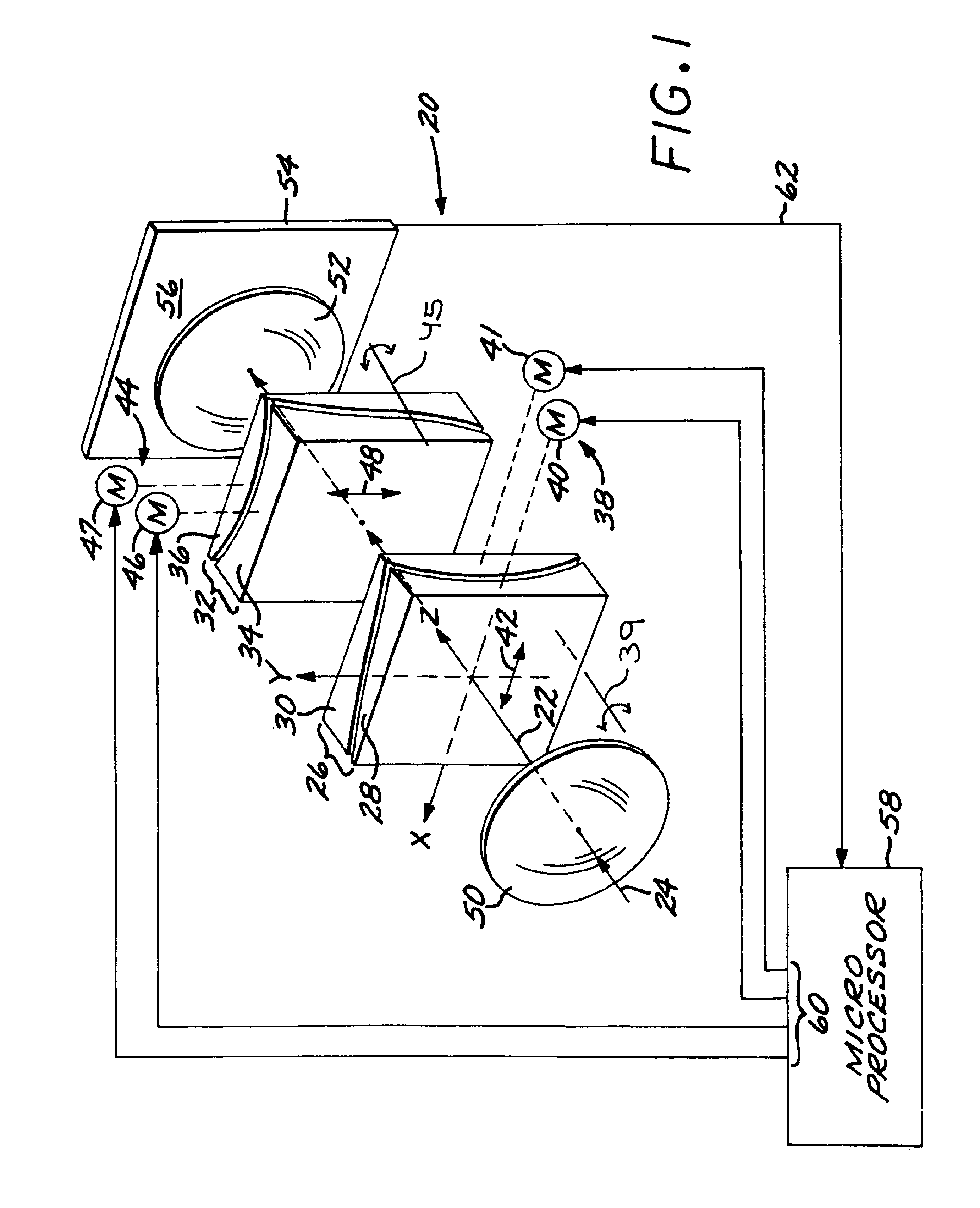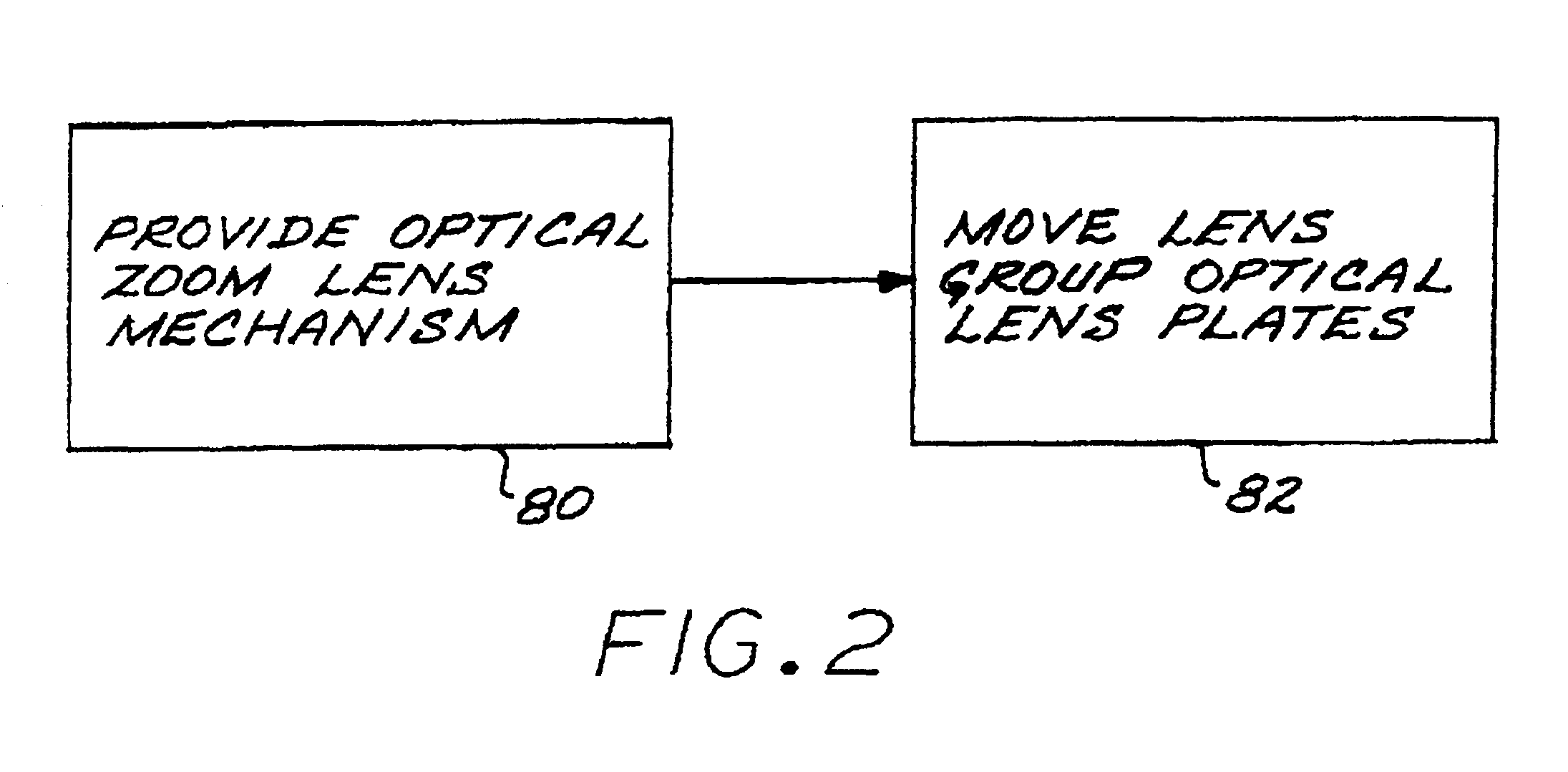Orthogonal movement lateral shift zoom lens
a lateral shift and zoom lens technology, applied in the field of orthogonal movement can solve the problems of boresight pointing of the optical axis, limited zoom range, and limitations of lateral shift zoom lens relative to conventional axial shift zoom lens
- Summary
- Abstract
- Description
- Claims
- Application Information
AI Technical Summary
Problems solved by technology
Method used
Image
Examples
Embodiment Construction
FIG. 1 depicts an optical zoom lens mechanism 20 arranged along an optical axis 22. As shown in FIG. 1, the optical axis 22 along which a light beam 24 is propagated lies coincident with a z-axis that is a boresight of the optical system. Absent the present approach, the optical axis 22 may shift away from the z-axis in an uncontrolled fashion as the optical zoom lens mechanism 20 operates. An x-axis and an orthogonal y-axis define a plane perpendicular to the z-axis, the optical axis 22, and the light beam 24. The optical zoom lens mechanism 20 comprises a first lens group 26 with at least two, and here illustrated as exactly two, adjacent transparent first optical lens plates 28 and 30. The first optical lens plates 28 and 30 are each rotationally nonsymmetric relative to the optical axis 22. That is, the lenses in conventional axial-translation zoom lenses are generally cylindrically symmetric when rotated about the optical axis. That is not the case for the first optical lens pl...
PUM
 Login to View More
Login to View More Abstract
Description
Claims
Application Information
 Login to View More
Login to View More - R&D
- Intellectual Property
- Life Sciences
- Materials
- Tech Scout
- Unparalleled Data Quality
- Higher Quality Content
- 60% Fewer Hallucinations
Browse by: Latest US Patents, China's latest patents, Technical Efficacy Thesaurus, Application Domain, Technology Topic, Popular Technical Reports.
© 2025 PatSnap. All rights reserved.Legal|Privacy policy|Modern Slavery Act Transparency Statement|Sitemap|About US| Contact US: help@patsnap.com



